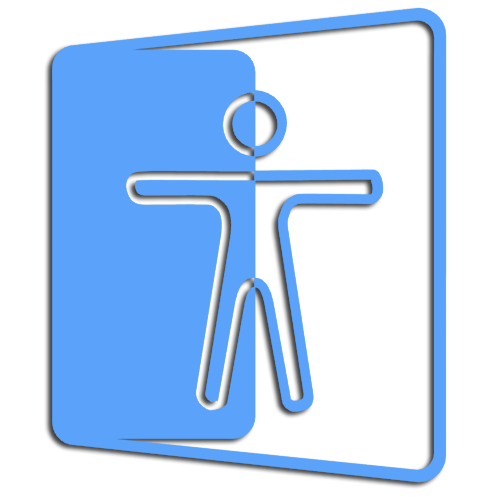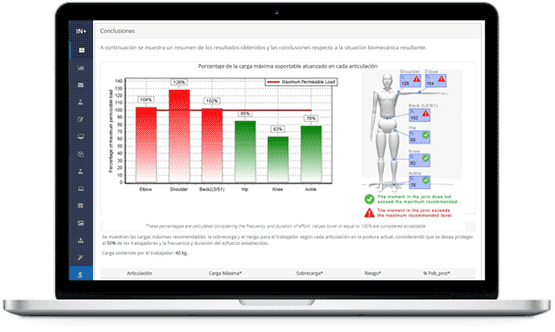

The Owas method enables evaluation of physical strain caused by the various postures assumed during work. Unlike other postural assessment methods such as RULA or REBA, which focus on individual postures, OWAS assesses all postures adopted throughout a task. However, it offers less precise evaluations than those methods. Despite its age, OWAS remains one of the most popular methods for evaluating postural load due to its ability to consider multiple postures over time.
Owas was developed by a group of ergonomists, engineers, and steel industry workers in Finland. Initially created for the steel industry, its applicability to other work environments quickly led to its widespread adoption. The method's simplicity and the release of a computerized version in 1991 made it one of the first ergonomic assessment software tools available.
Numerous scientific studies have endorsed OWAS's results in various work settings, such as medicine, the oil industry, and agriculture. Validation analyses confirm its accuracy when application conditions are met.
OWAS is an observational method, relying on the observation of a worker's postures during tasks at regular intervals. The method classifies the observed postures into 252 possible combinations based on the worker's back, arms, and legs postures and the load being handled.
Each observed posture is classified by assigning it a posture code. From the code of each posture, a risk or discomfort assessment is derived by assigning it a Risk Category (Owas distinguishes four Levels or Categories of risk for each posture).
After coding the postures, the method determines the Risk Category of each one individually. Subsequently, the risk or discomfort is assessed for each body part (back, arms, and legs) collectively, meaning it considers all adopted postures. To do this, a Risk Category is assigned to each body part based on the relative frequency of various postures adopted in different observed postures.
Lastly, by analyzing the Risk Categories calculated for each observed posture and different body parts collectively, the most critical postures and positions can be identified. This information helps determine the necessary corrective actions to improve the workstation.
Remember...
The Owas method evaluates the physical strain resulting from the postures adopted during work
Unlike other postural assessment methods, Owas is characterized by its ability to evaluate all postures adopted while performing the task collectively
Remember...
Observed postures are classified into 252 possible combinations based on the worker's back, arms, and legs positions, as well as the magnitude of the load being handled
Each observed posture is assigned a posture code. Each code is associated with a Risk Category
To apply the OWAS method, begin by observing the worker performing their task. If the worker carries out different activities during the observation period, divide the work into distinct phases. This division is recommended when the worker's activities vary significantly at different times. Assessments can be simple for homogeneous tasks with consistent activities or multi-phase for non-homogeneous tasks with various activities or phases. If phases are established, evaluate each phase separately.
Determine the observation period for recording postures based on the need for a representative sample of the worker's total postures. Shorter observation times are needed for jobs with brief, repetitive work cycles, while longer times are required for jobs with diverse tasks and undefined cycles. Generally, an observation period of 20 to 40 minutes is necessary.
Collect postures at regular intervals using a sampling frequency, typically between 30 and 60 seconds. The frequency depends on how often the worker changes posture and the variety of postures adopted. Higher frequency and diversity of postures require a higher sampling frequency and posture recording. Note that the number of observations affects assessment accuracy, with the estimation error increasing as the total number of observations decreases. Previous studies have found the upper limit of this error (with a 95% probability) to be 10% for 100 observations, 7% for 200 observations, 6% for 300 observations, and 5% for 400 observations.
After defining the phases, observation period, and sampling frequency, observe the task during the specified period and record postures at the sampling frequency. This can be achieved through on-site observation, analyzing photographs, or reviewing previously recorded videos of the activity.
Lastly, perform the calculations detailed in subsequent sections to obtain the risk assessment due to posture adoption during task development.
Remember...
If the activities carried out by the worker are significantly different at various moments in their work, a division into different work phases will be established, and a multi-phase evaluation will be carried out
In general, the observation period and task posture recording will range between 20 and 40 minutes
The sampling frequency indicates how often the worker's posture should be recorded. In general, postures should be collected at regular intervals, usually between 30 and 60 seconds
Remember...
A higher number of recorded postures allows for greater accuracy in the assessment. It is estimated that with 100 postures, the maximum error is 10%
The procedure for applying the Owas method can be summarized in the following steps:
Determine whether the task should be divided into several phases (simple or multi-phase evaluation).
If the activities carried out by the worker are significantly different at various moments in their work, a multi-phase evaluation will be carried out.Establish the total observation time for the task depending on the number and frequency of adopted postures
Typically, it will range between 20 and 40 minutes.Determine the observation or sampling frequency
Indicate how often the worker's posture will be recorded. Typically, it will range between 30 and 60 seconds.Observation and posture recording
Observe the task during the defined observation period and record postures at the established sampling frequency. Photographs or videos can be taken from appropriate viewpoints for the observations. For each posture, the position of the back, arms, and legs will be noted, as well as the load handled and the phase it belongs to if the evaluation is multi-phase.Coding of the observed postures
Each observed posture will be assigned a posture code that depends on the position of each limb and the load. Tables corresponding to each limb will be used for this purpose.Calculate the Risk category for each posture
Based on their Risk category, critical or higher-risk postures for the worker will be identified.Calculate the percentage of repetitions or relative frequency of each position for each body part
The percentage of each position for each body part (back, arms, and legs) will be calculated in relation to the total number of postures adopted.Calculate the Risk category for each body part based on relative frequency
This will reveal which body parts bear a higher risk and the need for task redesign.Determine, based on the results obtained, the necessary corrective and redesign actions
If changes have been introduced, re-evaluate the task using the OWAS method to verify the effectiveness of the improvements
During the defined observation period, observe the task and record postures at the sampling frequency. Although on-site observation is possible, filming the task and pausing the video at appropriate moments can make posture recording easier.
Assign a four-digit Posture Code to each posture. The first digit corresponds to the worker's back position in the evaluated posture (Table 1), the second to the arm position (Table 2), the third to the leg position (Table 3), and the fourth to the load being handled (Table 4). Figure 1 provides an example of posture coding.
| Back position | Code | |
|---|---|---|
| Upright back |
1 |
|
| The worker's trunk axis is aligned with the hips-legs axis. | ||
| Bent back |
2 |
|
| Can be considered as occurring if the back is flexed more than 20º (Mattila et al., 1999). | ||
| Twisted back |
3 |
|
| There is torsion of the trunk or lateral inclination greater than 20º. | ||
| Bent and twisted back |
4 |
|
| There is simultaneous trunk flexion and twisting (or bending). |
| Arm position | Code | |
|---|---|---|
| Both arms below shoulder level |
1 |
|
| Both arms of the worker are positioned below shoulder level. | ||
| One arm at or above shoulder level |
2 |
|
| One arm of the worker is below shoulder level and the other, or part of the other, is above shoulder level. | ||
| Both arms at or above shoulder level |
3 |
|
| Both arms (or part of the arms) of the worker are above shoulder level. |
| Leg position | Código | |
|---|---|---|
| Sitting |
1 |
|
| The worker remains seated. | ||
| Standing on two straight legs |
2 |
|
| Both legs straight and with the weight balanced between them. | ||
| Standing on one straight leg |
3 |
|
| Standing with one leg straight and the other leg bent with the weight unbalanced between them. | ||
| Standing or squatting on two bent legs and the weight balanced between both |
4 |
|
| It can be considered to occur for thigh-calf angles less than or equal to 150º (Mattila et al., 1999). Larger angles will be considered straight legs. | ||
| Standing or squatting on one bent leg and the weight unbalanced between both legs |
5 |
|
| It can be considered to occur for thigh-calf angles less than or equal to 150º (Mattila et al., 1999). Larger angles will be considered straight legs. | ||
| Kneeling |
6 |
|
| The worker rests one or both knees on the floor. | ||
| Walking |
7 |
|
| The worker walks. |
Once the postures included in the evaluation are coded, the Risk Category for each of them must be calculated. OWAS assigns a Risk Category to each posture based on its Posture Code.
There are four Risk Categories (Table 5), numbered from 1 to 4 in ascending order of risk with respect to their effect on the musculoskeletal system. Each category establishes the priority of possible corrective actions.
| Risk Category | Effect of the Posture | Required Action |
|---|---|---|
1 |
Normal and natural posture without harmful effects on the musculoskeletal system. |
No action required. |
2 |
Posture with the possibility of causing harm to the musculoskeletal system. |
Corrective actions required in the near future. |
3 |
Posture with harmful effects on the musculoskeletal system. |
Corrective actions required as soon as possible. |
4 |
The load caused by this posture has extremely harmful effects on the musculoskeletal system. |
Immediate corrective actions required. |
Use Table 6 to determine which Risk Category each posture belongs to. This table indicates the Risk Category to which the posture belongs based on each digit of the Posture Code. .
| Legs | 1 | 2 | 3 | 4 | 5 | 6 | 7 | |||||||||||||||
| Load | 1 | 2 | 3 | 1 | 2 | 3 | 1 | 2 | 3 | 1 | 2 | 3 | 1 | 2 | 3 | 1 | 2 | 3 | 1 | 2 | 3 | |
| Back | Arms | |||||||||||||||||||||
| 1 | 1 | 1 | 1 | 1 | 1 | 1 | 1 | 1 | 1 | 1 | 2 | 2 | 2 | 2 | 2 | 2 | 1 | 1 | 1 | 1 | 1 | 1 |
| 2 | 1 | 1 | 1 | 1 | 1 | 1 | 1 | 1 | 1 | 2 | 2 | 2 | 2 | 2 | 2 | 1 | 1 | 1 | 1 | 1 | 1 | |
| 3 | 1 | 1 | 1 | 1 | 1 | 1 | 1 | 1 | 1 | 2 | 2 | 3 | 2 | 2 | 3 | 1 | 1 | 1 | 1 | 1 | 2 | |
| 2 | 1 | 2 | 2 | 3 | 2 | 2 | 3 | 2 | 2 | 3 | 3 | 3 | 3 | 3 | 3 | 3 | 2 | 2 | 2 | 2 | 3 | 3 |
| 2 | 2 | 2 | 3 | 2 | 2 | 3 | 2 | 3 | 3 | 3 | 4 | 4 | 3 | 4 | 4 | 3 | 3 | 4 | 2 | 3 | 4 | |
| 3 | 3 | 3 | 4 | 2 | 2 | 3 | 3 | 3 | 3 | 3 | 4 | 4 | 4 | 4 | 4 | 4 | 4 | 4 | 2 | 3 | 4 | |
| 3 | 1 | 1 | 1 | 1 | 1 | 1 | 1 | 1 | 1 | 2 | 3 | 3 | 3 | 4 | 4 | 4 | 1 | 1 | 1 | 1 | 1 | 1 |
| 2 | 2 | 2 | 3 | 1 | 1 | 1 | 1 | 1 | 2 | 4 | 4 | 4 | 4 | 4 | 4 | 3 | 3 | 3 | 1 | 1 | 1 | |
| 3 | 2 | 2 | 3 | 1 | 1 | 1 | 2 | 3 | 3 | 4 | 4 | 4 | 4 | 4 | 4 | 4 | 4 | 4 | 1 | 1 | 1 | |
| 4 | 1 | 2 | 3 | 3 | 2 | 2 | 3 | 2 | 2 | 3 | 4 | 4 | 4 | 4 | 4 | 4 | 4 | 4 | 4 | 2 | 3 | 4 |
| 2 | 3 | 3 | 4 | 2 | 3 | 4 | 3 | 3 | 4 | 4 | 4 | 4 | 4 | 4 | 4 | 4 | 4 | 4 | 2 | 3 | 4 | |
| 3 | 4 | 4 | 4 | 2 | 3 | 4 | 3 | 3 | 4 | 4 | 4 | 4 | 4 | 4 | 4 | 4 | 4 | 4 | 2 | 3 | 4 | |
After determining the Risk Categories for each posture, identify which postures create the most significant postural load for the worker. To evaluate the risk of all postures collectively, calculate the relative frequency of each position adopted by each body part. In other words, determine the percentage of total postures recorded in which each body part assumes a specific position. For example, if you recorded 50 postures and the worker's back was bent in 10 of them, the relative frequency of a bent back is 20%. Apply this procedure to all possible positions for all body parts.
Once you know the relative frequencies, consult Table 7 to determine the overall Risk Categories for the back, arms, and legs. This information will help you identify which body parts experience the most discomfort and decide on the appropriate corrective measures to implement.
| Relative frequency | ≤10% | ≤20% | ≤30% | ≤40% | ≤50% | ≤60% | ≤70% | ≤80% | ≤90% | ≤100% | |
| BACK | Upright back | 1 | 1 | 1 | 1 | 1 | 1 | 1 | 1 | 1 | 1 |
| Bent back | 1 | 1 | 1 | 2 | 2 | 2 | 2 | 2 | 3 | 3 | |
| Twisted back | 1 | 1 | 2 | 2 | 2 | 3 | 3 | 3 | 3 | 3 | |
| Bent and twisted back | 1 | 2 | 2 | 3 | 3 | 3 | 3 | 4 | 4 | 4 | |
| BRAZOS | Both arms below shoulder | 1 | 1 | 1 | 1 | 1 | 1 | 1 | 1 | 1 | 1 |
| One arm at or above shoulder | 1 | 1 | 1 | 2 | 2 | 2 | 2 | 2 | 3 | 3 | |
| Both arms at or above shoulder level | 1 | 1 | 2 | 2 | 2 | 2 | 2 | 3 | 3 | 3 | |
| PIERNAS | Sitting | 1 | 1 | 1 | 1 | 1 | 1 | 1 | 1 | 1 | 2 |
| Standing on two straight legs | 1 | 1 | 1 | 1 | 1 | 1 | 1 | 1 | 2 | 2 | |
| Standing on one straight leg | 1 | 1 | 1 | 2 | 2 | 2 | 2 | 2 | 3 | 3 | |
| Standing or squatting on two bent legs | 1 | 2 | 2 | 3 | 3 | 3 | 3 | 4 | 4 | 4 | |
| Standing or squatting on one bent leg | 1 | 2 | 2 | 3 | 3 | 3 | 3 | 4 | 4 | 4 | |
| Kneeling | 1 | 1 | 2 | 2 | 2 | 3 | 3 | 3 | 3 | 3 | |
| Walking | 1 | 1 | 1 | 1 | 1 | 1 | 1 | 1 | 2 | 2 | |
Diego-Mas, J.A., Poveda-Bautista, R. y Garzon-Leal, D.C., 2015. Influences on the use of observational methods by practitioners when identifying risk factors in physical work. Ergonomics, 58(10), pp. 1660-70.
Diego-Mas, J.A. y Alcaide-Marzal, J, 2014. Using Kinect™ sensor in observational methods for assessing postures at work. Applied Ergonomics, 45(4), pp. 976-85.
Karhu, O., Kansi, P. y Kuorinka, L., 1977. Correcting working postures in industry: A practical method for analysis. Applied Ergonomics, 8, pp. 199-201.
Kivi, P. y Mattila, M., 1991. Analysis and improvement of work postures in the building industry: application of the computerized OWAS method. Applied Ergonomics, 22, pp. 43–48.
Mattila, M. y Vilkki, P., 1999. OWAS methods. En: W. Karwoswki and W. Marras, Editors, The Occupational Ergonomics Handbook, CRC Press, Boca Raton, pp. 447–459.
Diego-Mas, Jose Antonio. Postural assessment using the OWAS method. Ergonautas, Universidad Politécnica de Valencia, 2023. Available online: https://www.ergonautas.upv.es/ergoniza/app_en/land/index.html?method=owas
A cloud based software that integrates more than 20 tools for managing the ergonomics of the workstations in your company.
Evaluate all ergonomic risk factors of the workstations in your company: inadequate postures, repetitive movements, load handling, thermal environment...

Use Artificial Intelligence for the automated detection of postures in photographs or videos.
Generate fully customizable reports in Microsoft Word or Adobe Pdf format.
In a multiuser environment so that your company can have access to your data everywhere.
You only need a free account on Ergoniza
ERGONIZA allows you to use Artificial Intelligence for postural load assessment. Automatically capture workers’ postures from a photograph or a video and obtain an automated evaluation of the risk associated with inadequate or forced postures.
AI in actionERGONIZA helps you manage the ergonomics of the workstations of your companies. Evaluate all the risk factors present in the workstations, manage the evaluations, and obtain editable and customizable reports.
You only need to register as a user of ERGONIZA to start testing.
Sign UpUnlock the full potential of Ergoniza. By becoming a Pro User you'll have access to all of Ergoniza and be able to use all of the online software without restrictions or time limits. You'll be able to use the results of evaluation methods and tools in your professional activity. You'll be able to print the results reports in pdf or Word and save your studies in files to open them later.
To register as a Pro user, you must first login to Ergoniza.
(*) In European Union countries, the price will be increased with the corresponding VAT.
(**) The price in american dollars has been calculated at the current exchange rate and may vary.
is a web by . Ergonautas is the specialized website in occupational ergonomics and ergonomic assessment of workstations at the . Ergonautas aims to be a useful support tool for the Occupational Risk Prevention and Ergonomics professional and people in training, providing rigorous technical information on occupational ergonomics, online tools for its application, research, training, and participation forums.
Ergonautas is formed by a large human team. In addition to technicians and programmers, the Ergonautas team is made up of researchers and professors from the Polytechnic University of Valencia. The team, led by José Antonio Diego Más, is at the forefront of research and teaching in ergonomics, teaching in official degrees and master's degrees, and developing research projects in the field of ergonomics and new technologies oriented towards humans.
If you need to know more, get in touch with Ergonautas
Or follow us on Linkedin
- - -
© 2006 - Universidad Politécnica de Valencia




